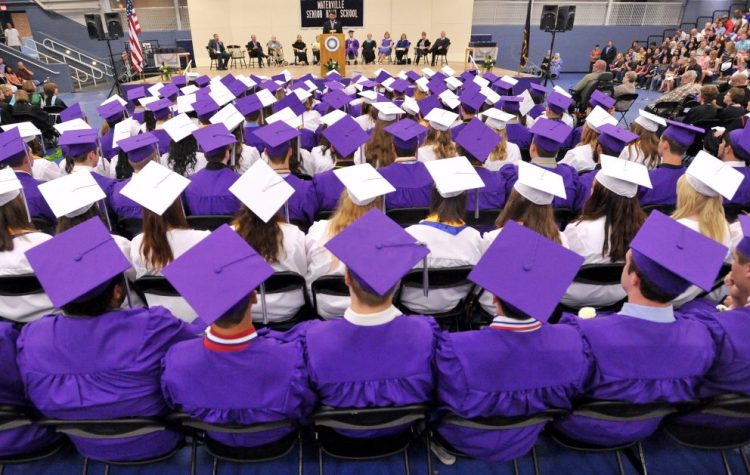Some students look forward to their report cards, while others look for a place to hide. Either way, there aren’t many surprises when the grades come out.
The same is true when we grade schools instead of students.
U.S. News & World Report issued its rankings of the nation’s high schools this week, with results that no one in Maine could have found shocking.
Yarmouth High School ranked No. 1 in the state and 209th best in the country. Cape Elizabeth High School ranked second here, according to the magazine, and 459th nationally. Falmouth High School finished third in the state and 485th overall. By finishing in the top 500, the three schools were awarded “gold medals” by the editors, indicating that they were in the top 2 percent of schools.
WHAT GETS MEASURED
Congratulations to Yarmouth, Cape and Falmouth. The honor is surely well deserved by the students and staff who have been working hard at the business of learning.
But can we take a moment to reflect on what else these rankings tell us? Because if we do, there is something we probably should find shocking.
It was no surprise to see these schools perform so well. They always do, whether it’s on standardized tests or in placing students in college.
They are also well above average when it comes to income, according to the U.S. Census. Maine’s median income is $50,826 for households and $28,473 per capita.
Yarmouth’s median income is $64,962 for households and $44,347 per capita. For Cape, the numbers are $105,925 and $52,536. In Falmouth, it’s $104,020 and $60,314.
The towns also rank at the top when it comes to home prices. According to Zillow, the national online real estate tracker, the median house price in Yarmouth is $412,017.
In Cape, it’s $409,198. In Falmouth, it’s $451,830. The statewide median home price is $219,000.
That matters, because school districts that have a strong property tax base have more control over what they spend on education. Even though the state tries to even the playing field by distributing broad-based tax revenue through the school funding formula, there is still an advantage.
The one ranking where these three districts are at the back of the pack is the proportion of children in poverty who attend their schools. Only 9 percent of Yarmouth students are eligible for free- or reduced-price lunches, and the other gold medal winners are the same. The state average is 45 percent.
It’s a complicated puzzle and there are many factors in play, but you can’t escape the fact that the school districts that have the most wealthy kids and the fewest poor ones are the highest performing. Unless you believe that kids with money are smarter than kids without it, you have to realize that there is more than just the learning that these report cards are assessing.
Almost every measure of school quality is as much about income as education. Ultimately, these rankings don’t tell us anything that Maine Revenue Services couldn’t.
MISPLACED FOCUS
For decades, we have punished underperforming schools in poor districts because they have not been able to overcome the advantage that wealth provides for students in other districts. Maybe it’s time we recognize that children from low-income families might get more done at school if social policy focused more on their health care, housing and food security than preparing them for standardized tests.
We should grapple with what these report cards tell us, and decide if we are comfortable with the disparities they reveal.
Send questions/comments to the editors.



Comments are no longer available on this story